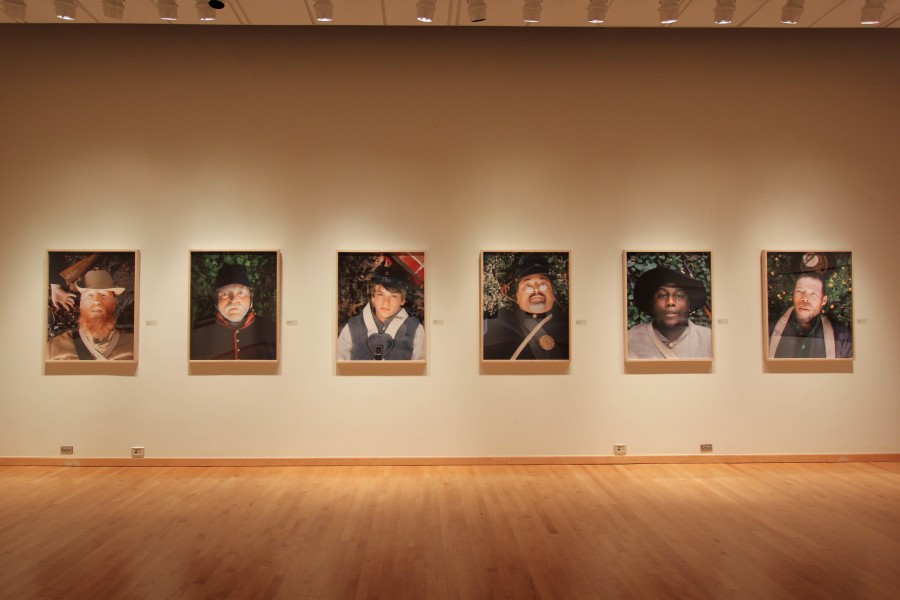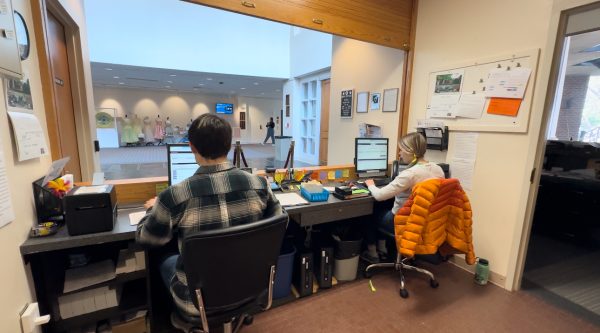A matter of life, death and history
Photographer Eliot Dudik explores disappearing landscapes and death in his collections
Eliot Dudik’s collection, “Still Lives.” Photo by Ellen Kanzinger, ‘18.
October 26, 2015
Eliot Dudik, an eastern Virginia photographer who won the 2014 PhotoNola Prize and whose works have been recently featured on CNN, held an artist’s talk on Oct. 21 in Wilson Hall.
His large-scale photographs projects “Broken Land” and “Still Lives” were exhibited in the Staniar Gallery in Wilson Hall from Oct. 9-21.
In his talk, Dudik discussed two photographers who greatly inspire him: William Henry Fox Talbot and Eadward Muybridge. Talbot invented photography, and Muybridge specialized in photographic studies of movement.
Dudik also talked about finding inspiration in disappearing landscapes. He cited Route 17 in South Carolina as an example of the replacement of historic sites with commercial buildings.
To memorialize these sites, Dudik shot the project “Road Ends in the Water.” He said that he realized the importance of the spaces, remaking on the “tenacious existence” of the “modest souls.”
Dudik also draws inspiration from the Civil War and American history in his projects “Broken Land” and “Still Lives.”
He started the project “Broken Land” after he finished graduate school. He shot the project with a large-scale camera that exposed two sheets at the same time.
Dudik said he wants to reproduce landscapes that record American history and emphasize the American condition. He said he wants to dispel the myth of the Civil War as only a Southern issue.
Dudik said he located battle sites by finding people whose ancestors were killed in the Civil War. He hired reenactors to perform those scenes. He hoped to appeal to both historians and the actors who devote their lives to performance.
Dudik said he became interested in exploring themes of death when an actor told him, “I don’t die anymore.” He found that performance of people’s death is really a study in psychology.
“I didn’t change my ideas about the war and death during the process I shot my project, and insist them even more,” Dudik said. “I would like to introduce new photography as an art form and express my thought through the photos of the losing land and war.”
After the lecture, photography professor Christa Bowden said, “I hope through this lecture, students in photography class can know more about the work related to large format photography and know the movement in the photo due to the long time exposure.”













